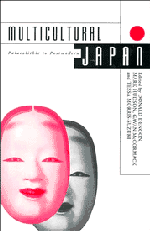Book contents
- Frontmatter
- Contents
- List of Figures and Tables
- List of Contributors
- Abbreviations
- Introduction
- Part 1 Archaeology and Identity
- Part 2 Centre and Periphery
- Part 3 Contact with the Outside
- Part 4 The Japanese Family
- 12 Modern Patriarchy and the Formation of the Japanese Nation State
- 13 The Modern Japanese Family System: unique or universal?
- Part 5 Culture and Ideology
- Afterword: Diversity and Identity in the Twenty-First Century
- Index
13 - The Modern Japanese Family System: unique or universal?
Published online by Cambridge University Press: 05 November 2011
- Frontmatter
- Contents
- List of Figures and Tables
- List of Contributors
- Abbreviations
- Introduction
- Part 1 Archaeology and Identity
- Part 2 Centre and Periphery
- Part 3 Contact with the Outside
- Part 4 The Japanese Family
- 12 Modern Patriarchy and the Formation of the Japanese Nation State
- 13 The Modern Japanese Family System: unique or universal?
- Part 5 Culture and Ideology
- Afterword: Diversity and Identity in the Twenty-First Century
- Index
Summary
Introduction
Before the Second World War Japan declared itself a family state and most Japanese people believed that the family state was unique to Japan. This chapter, however, takes the view that all nation states are family states, with the modern family as their basic unit. It is for this reason that modern Japan was forced to invent its own traditions of family state, centred around the imperial family.
It is important to compare the various forms of the modern family in all nations. The model of the modern family has been influenced more by the nation state than by the developmental level of capitalism. As power relations among nation states altered the internal state structure, modern family models changed. This chapter traces historical change in models of the family and of the physical structures that contained it. The Japanese family has been based on a dual structure made up of the ie (household) and katei (family) institutions. Through historical analysis of family models, Japanese society deserves cross-cultural comparison. The concept of ie and its identity within the Japanese version of the modern family has been discussed by Ueno Chizuko in the previous chapter.
Ie/katei Institutions
The ie institution has been regarded as that family system which is distinctive to Japan. The word itself means literally ‘house’. After the Second World War the ie was regarded as a relic of the feudal patriarchal family system headed by a father and succeeded by his eldest son, and was therefore abolished by the post-war Japanese Constitution.
- Type
- Chapter
- Information
- Multicultural JapanPalaeolithic to Postmodern, pp. 224 - 232Publisher: Cambridge University PressPrint publication year: 1996



